Disclosure: This article contains affiliate links. We may earn a commission from purchases at no extra cost to you, which helps our travel content.
The first time I stepped into a Tokyo izakaya, I was completely lost. The cacophony of Japanese conversations, the smoke-tinged air, and menu items I couldn't pronounce created a momentary panic. Yet by the end of that night—seated at a counter where a chef grilled skewers inches from my face while businessmen in suits clinked glasses around me—I'd discovered my favorite way to experience authentic Japanese food culture. Seven years and countless visits later, these humble Japanese pubs remain my window into the soul of Tokyo's culinary landscape. Unlike the polished sushi counters or Michelin-starred temples to gastronomy that tourists flock to, izakayas offer something far more valuable: a genuine glimpse into how locals actually eat, drink, and socialize. Join me as I guide you through the wooden sliding doors of Tokyo's most atmospheric drinking dens, where the true heart of Japanese food culture beats strongest.
Understanding the Izakaya Experience
An izakaya (居酒屋) is essentially Japan's answer to the neighborhood pub, but with a culinary focus that elevates the experience far beyond mere drinking establishments. The word itself combines 'i' (to stay) and 'sakaya' (sake shop), reflecting their historical evolution from sake stores where customers could sample drinks to full-fledged dining institutions.
What makes izakayas special is their unique dining format. Rather than ordering individual main courses, you'll share small plates called 'otsumami' designed to complement your drinks. The food arrives gradually throughout your visit, creating a leisurely dining rhythm that can stretch for hours. It's dining as a social experience, not just a meal.
Izakaya etiquette follows certain patterns worth knowing. Upon arrival, you'll likely be greeted with a chorus of 'Irasshaimase!' (Welcome!) and presented with an oshibori (warm towel) to clean your hands. Most establishments offer table seating, counter spots, or traditional tatami rooms where you'll remove shoes before sitting on floor cushions.
The atmosphere varies dramatically—from boisterous chain establishments to hushed traditional spots where conversations remain quietly respectful. What remains consistent is the izakaya's role as a 'third place' in Japanese society: not work, not home, but the vital social space in between where relationships are strengthened through shared food and drink.
Before my first izakaya adventure, I prepared by picking up a pocket-sized Japanese phrasebook that proved invaluable for deciphering menus and ordering with confidence. Even with my limited Japanese, the universal language of appreciative nods and satisfied smiles bridged any communication gaps.
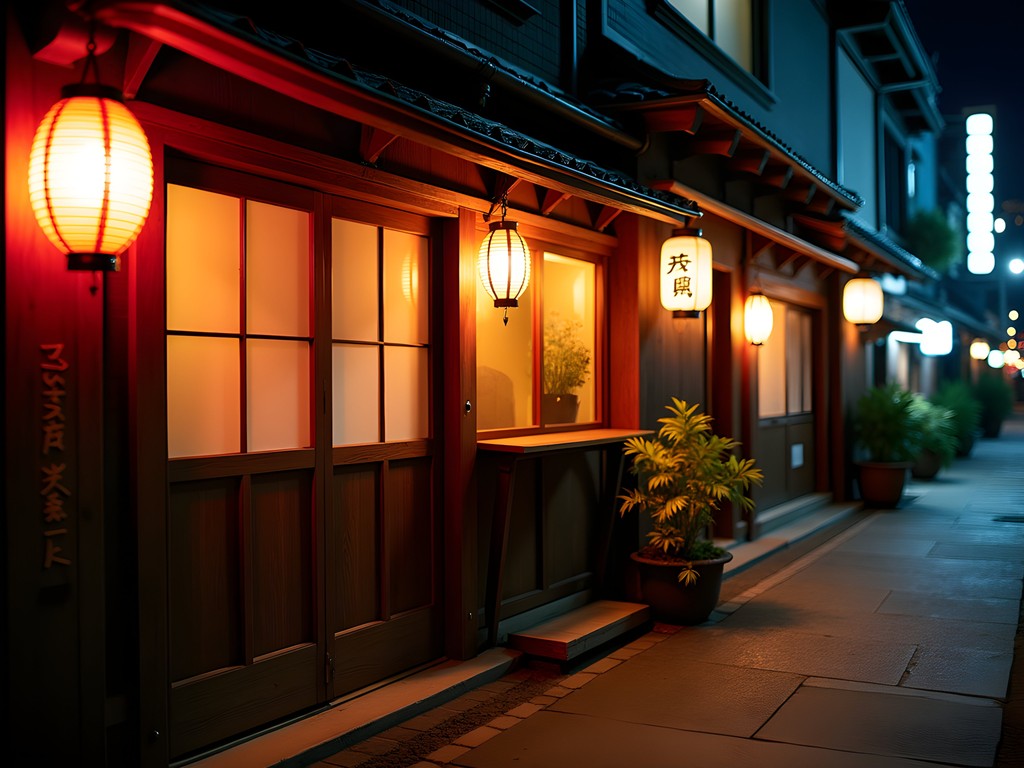
💡 Pro Tips
- Learn a few basic Japanese phrases like 'Sumimasen' (Excuse me/Sorry) and 'Oishii' (Delicious)
- Look for places with a red lantern (akachōchin) outside - this is a traditional izakaya symbol
- Don't be intimidated by all-Japanese menus - many places have picture menus or food displays you can point to
Navigating Tokyo's Izakaya Districts
Tokyo's izakaya landscape spans the entire metropolis, but certain neighborhoods offer particularly rich concentrations worth exploring. Each area carries its own distinctive character and izakaya style.
Shinjuku's Golden Gai remains my personal favorite—a warren of six narrow alleyways housing over 200 tiny bars and izakayas, many seating just 5-8 patrons. The preserved post-war architecture creates a time-capsule atmosphere that feels worlds away from Shinjuku's neon-lit main streets. During my last visit, I squeezed into a second-floor establishment called Albatross, where the eccentric owner served Sapporo drafts alongside homemade pickles while playing vintage jazz records. The intimacy of these spaces often leads to conversations with locals that wouldn't happen elsewhere.
Ebisu Yokocho offers a more food-focused experience—a covered arcade lined with small izakayas specializing in different culinary niches. One stall might focus entirely on grilled chicken parts while its neighbor exclusively serves Okinawan cuisine. The shoulder-to-shoulder seating arrangements make it impossible not to strike up conversations with neighboring diners.
Shibuya's Nonbei Yokocho (Drunkard's Alley) presents another concentration of character-filled establishments. These two parallel alleyways near Shibuya Station house dozens of decades-old izakayas, many preserving their original 1950s interiors. The establishments are so small that reservations are essential, particularly for groups larger than two.
For those seeking more accessible yet still authentic options, Ueno's Ameyoko Market area features larger izakayas where the boisterous atmosphere makes language barriers less problematic. Meanwhile, Yurakucho's famous 'Izakaya Alley' beneath the railway tracks offers atmospheric drinking dens where salarymen unwind after work.
To navigate these districts efficiently, I rely on my portable WiFi device to access maps and translation apps on the go. Having reliable internet access has saved me countless times when trying to locate hidden spots down unmarked alleyways.
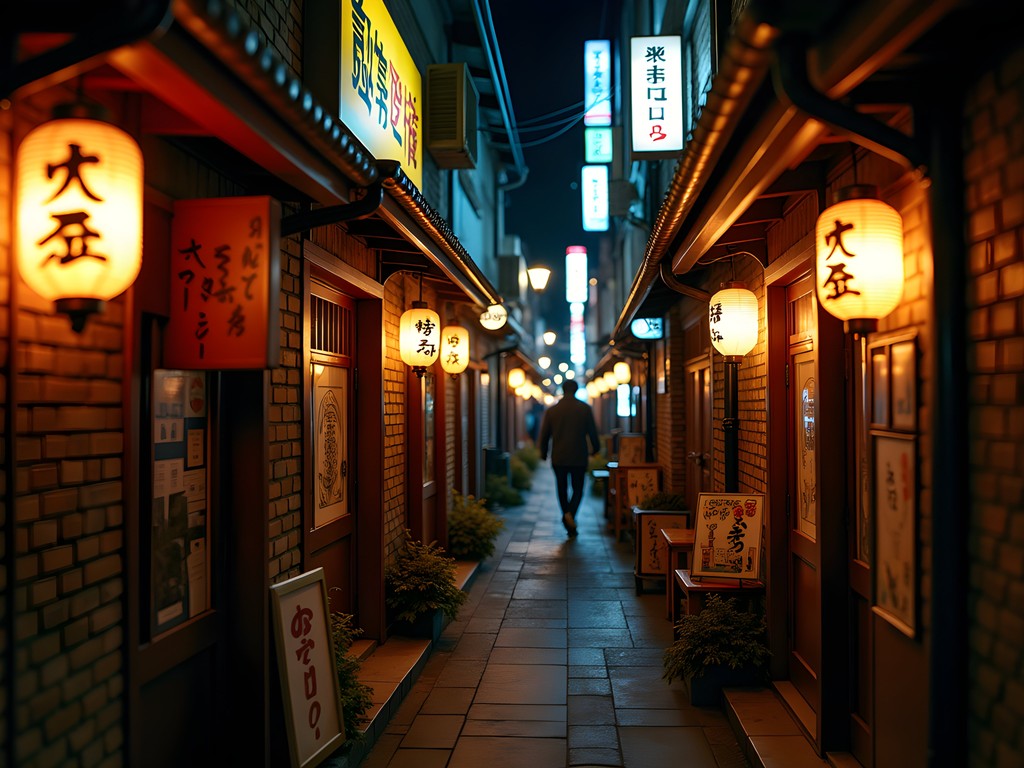
💡 Pro Tips
- Visit Golden Gai on weeknights to avoid weekend crowds and increase your chances of finding seats
- Look for izakayas with 'English OK' signs if you're concerned about language barriers
- Many izakayas have a cover charge (otōshidai) of 300-700 yen per person - this is standard practice
Essential Izakaya Dishes & Drinks
The beauty of izakaya dining lies in its variety—these establishments excel at serving a wide range of small, perfectly executed dishes rather than specializing in one cuisine style. Over years of exploration, I've developed a repertoire of must-order items that showcase the true essence of izakaya cooking.
Yakitori (grilled chicken skewers) represents izakaya cuisine at its purest: simple ingredients transformed through precise cooking techniques. Beyond familiar chicken breast or thigh, adventurous eaters should try nankotsu (cartilage) or hatsu (heart), often the true measure of a yakitori chef's skill. The best yakitori spots use binchotan charcoal, which imparts a distinctive smokiness without overwhelming the meat's natural flavor.
Karaage (Japanese fried chicken) might seem straightforward, but the best versions—marinated in ginger, soy, and sometimes sake before double-frying—achieve a transcendent balance of crisp exterior and juicy interior that puts other fried chicken to shame. A squeeze of lemon and a dab of Kewpie mayonnaise elevate it further.
Sashimi at izakayas offers a more relaxed counterpoint to formal sushi dining. Expect generous portions of pristinely fresh fish served simply with wasabi, soy sauce, and perhaps shiso leaves or myoga ginger for accent.
Seasonal specialties often provide the most memorable bites. During spring visits, I seek out takenoko (bamboo shoot) dishes, while autumn brings sanma (Pacific saury) grilled whole with nothing but salt and served with grated daikon radish.
For drinks, while premium sake gets much attention, don't overlook highballs—whisky and soda water served in tall glasses over ice—the preferred refreshment of Japanese office workers. Shochu, Japan's indigenous distilled spirit made from ingredients like sweet potato or barley, rewards exploration either straight or mixed with hot water as oyuwari.
Nama bīru (draft beer) remains the classic izakaya opener, with major Japanese brands like Asahi, Kirin, and Sapporo available everywhere. The ritual of starting with a collective "Kampai!" (cheers) sets the tone for the shared dining experience to follow.
To properly document these culinary adventures, my compact camera has proven invaluable. Its exceptional low-light performance captures the moody izakaya ambiance without requiring disruptive flash photography.
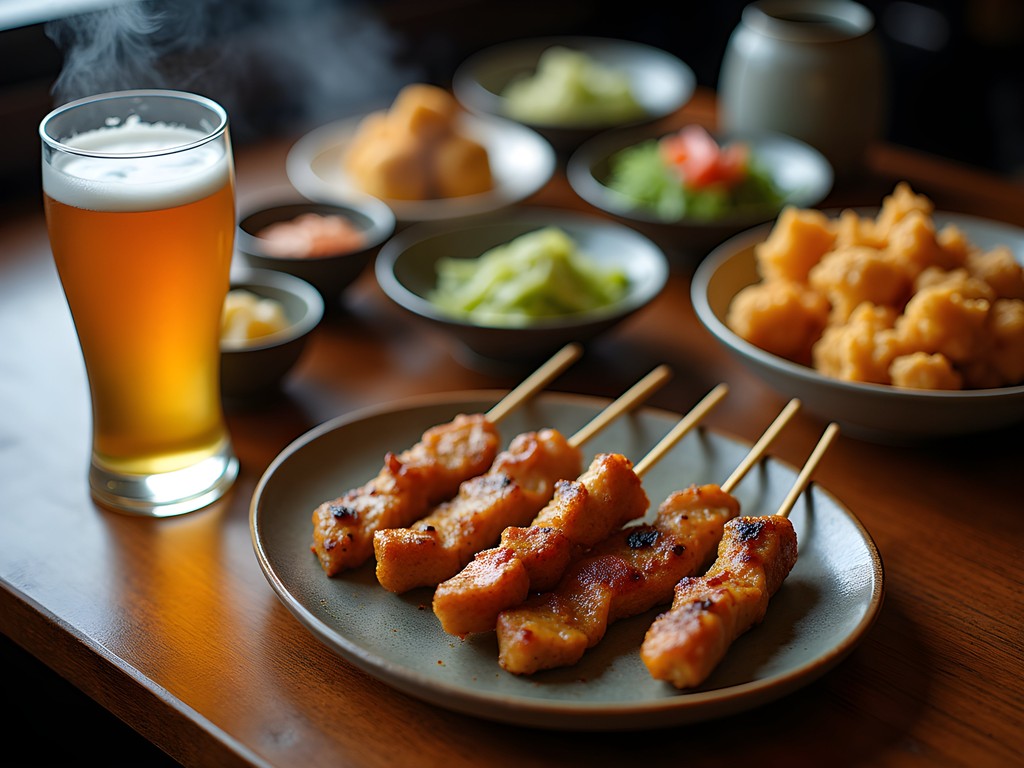
💡 Pro Tips
- Order drinks first, then food in small batches rather than all at once
- Try 'omakase' (chef's choice) at specialty izakayas to taste their best offerings
- Look for handwritten daily specials (usually on wall signs) - these feature the freshest seasonal ingredients
Beyond the Guidebooks: My Favorite Hidden Izakayas
After dozens of Tokyo visits, I've cultivated a personal collection of izakaya gems that rarely appear in English-language guidebooks. These establishments have earned my loyalty through their exceptional food, distinctive atmosphere, and the warm relationships I've built with their proprietors.
Kotaro in Shibuya remains my gold standard for elevated izakaya cuisine. Hidden behind an unmarked wooden door in a residential area, chef Kotaro Hayashi serves meticulously sourced ingredients prepared with technical precision yet presented without pretension. His dashimaki tamago (Japanese omelet) achieves a custardy interior that's taken me years to appreciate fully, while seasonal sashimi arrives at the perfect temperature—not straight from the refrigerator as lesser places serve it. With just 10 counter seats, reservations are essential and best made through your hotel concierge.
Maru in Asakusa offers a completely different experience—a boisterous, smoky space where the specialty is oden, a soy-based hot pot containing ingredients like daikon radish, konnyaku (yam cake), and various fishcakes. The third-generation owner maintains the shop exactly as his grandfather established it in 1950, including the communal seating that encourages conversation with neighboring diners. This is where I've had some of my most memorable interactions with Tokyo locals despite minimal shared language.
Jomon in Roppongi stands out for its Kyushu-style cuisine, particularly its horse sashimi and chicken nanban (fried chicken with tartar sauce). While the Roppongi location might suggest a tourist trap, the clientele remains predominantly Japanese, drawn by the reasonable prices and boisterous atmosphere. Their sweet potato shochu, served in a bamboo vessel over a massive hand-carved ice sphere, provides the perfect accompaniment to their robustly flavored dishes.
Saiki near Yoyogi Station specializes in seafood from the owner's native Kyushu region. The daily handwritten menu reflects whatever arrived from southern Japan that morning. Their signature dish—whole aji (horse mackerel) butterflied, deboned, and grilled over charcoal—achieves a perfect balance of crispy skin and tender flesh that haunts my food dreams between Tokyo visits.
For solo travelers intimidated by language barriers, I recommend downloading the translation app which allows you to point your camera at Japanese menus for instant translation. While not perfect, it's helped me decipher countless dishes that would have otherwise remained mysterious.
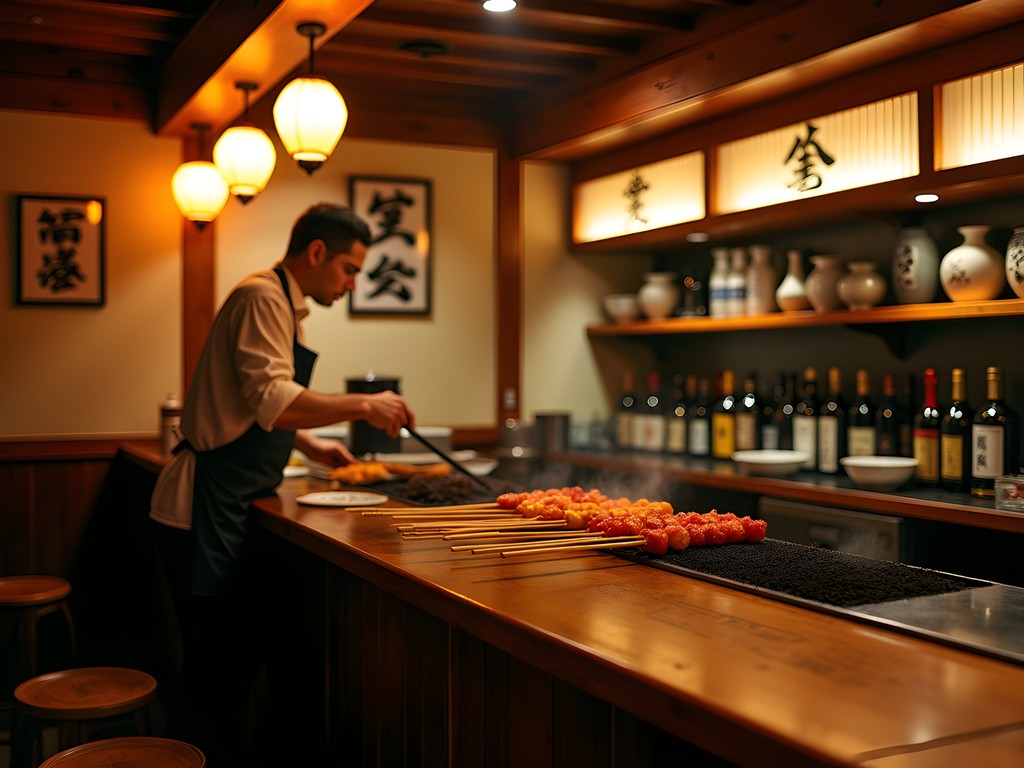
💡 Pro Tips
- Make reservations for popular izakayas through your hotel concierge when possible
- Look for places with customers wearing suits on weeknights - this often indicates quality establishments favored by locals
- Bring cash - many smaller izakayas don't accept credit cards
Izakaya Etiquette: Navigating Cultural Nuances
One of the greatest joys of izakaya exploration comes from participating in Japanese dining culture, but certain etiquette points can enhance your experience while showing respect for local customs.
Seating arrangements often follow specific protocols. Many izakayas will ask nan mei-sama? (how many people?) upon arrival. Solo dining is perfectly acceptable at counter seats, though less common at table seating. Larger groups should make reservations, as spontaneously accommodating several people can be challenging in smaller establishments.
Ordering practices differ from Western restaurants. Rather than ordering everything at once, izakaya dining unfolds gradually. Begin with drinks and perhaps one or two small dishes, then continue ordering throughout your visit. This approach—called tsukidashi or otsumami—ensures food arrives fresh and hot while extending the social experience.
Drinking customs include several charming traditions. Never pour your own drink—instead, refill your companion's glass when it empties, and they'll reciprocate. When receiving a pour, lift your glass slightly with both hands. If drinking sake, the small cups (ochoko) are traditionally held with one hand supporting the bottom.
Bill payment occurs at the table in most establishments. The check (o-kaikei) typically arrives as a small paper slip. Unlike North American customs, tipping is not practiced and can actually cause confusion. Simply bring the bill to the cashier (usually near the entrance) and pay the exact amount.
Useful phrases can significantly enhance your experience. Beyond basic greetings, learning Osusume wa nan desu ka? (What do you recommend?) often results in accessing the chef's best seasonal offerings. When particularly impressed by a dish, expressing Totemo oishii desu! (Very delicious!) brings genuine appreciation from staff.
My most memorable izakaya experiences have come from observing Japanese patrons and mirroring their behavior. During one visit to a tiny six-seat counter establishment in Koenji, I watched as a regular customer presented the chef with a small gift from his recent travels—a bottle of local spirits from Hokkaido. The simple gesture sparked a generous response, with the chef sending over special off-menu items throughout our meal.
To capture these authentic cultural moments without being intrusive, I rely on my smartphone which excels in low-light photography without requiring disruptive flash. The ability to document these experiences discreetly has provided me with lasting memories of ephemeral culinary moments.
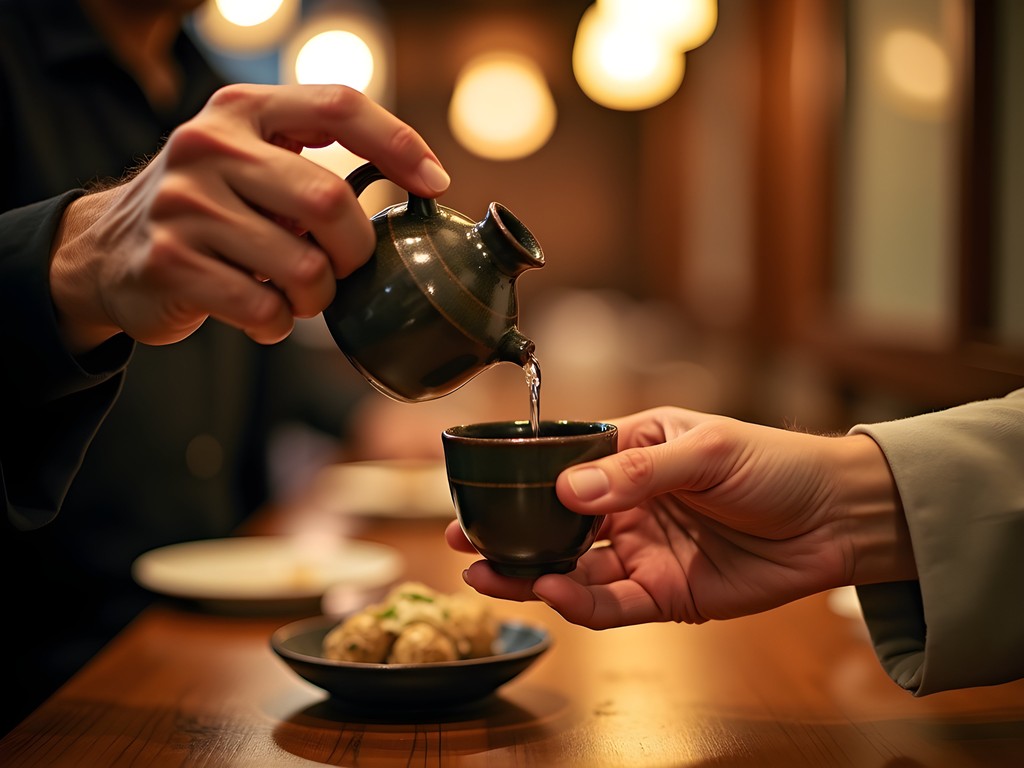
💡 Pro Tips
- Say 'Otsukare-sama desu' to businesspeople dining after work - it acknowledges their hard work
- Learn to say 'Gochisousama deshita' (thank you for the meal) when leaving
- If you're invited to join locals, accepting graciously often leads to the most authentic experiences
Final Thoughts
As I reflect on countless evenings spent in Tokyo's izakayas—from smoky yakitori counters to refined sake dens—I'm struck by how these humble establishments have provided my most authentic connections to Japanese culture. Beyond the exceptional food and drink, izakayas offer something increasingly rare in our globalized world: a genuine cultural experience that hasn't been sanitized for tourist consumption. They represent Japanese dining in its most honest form—convivial, unpretentious, and deeply rooted in tradition while remaining thoroughly modern. Whether you're savoring perfectly grilled chicken skewers in Golden Gai or clinking glasses with salarymen beneath the Yurakucho train tracks, Tokyo's izakayas invite you to participate in, rather than merely observe, Japanese culture. So on your next Tokyo visit, venture beyond the robot restaurants and conveyor-belt sushi chains. Instead, slide open a wooden door, duck under the noren curtains, and step into the warm embrace of an izakaya. Kampai to your adventures!
✨ Key Takeaways
- Izakayas offer a more authentic cultural experience than many tourist-oriented restaurants
- Learning basic Japanese phrases and etiquette greatly enhances your izakaya experience
- Focus on seasonal specialties and chef recommendations for the best culinary experiences
- The best izakayas are often hidden in alleyways or residential neighborhoods away from main tourist areas
📋 Practical Information
Best Time to Visit
year-round
Budget Estimate
$40-80 per person per meal including drinks
Recommended Duration
1-week
Difficulty Level
Beginner
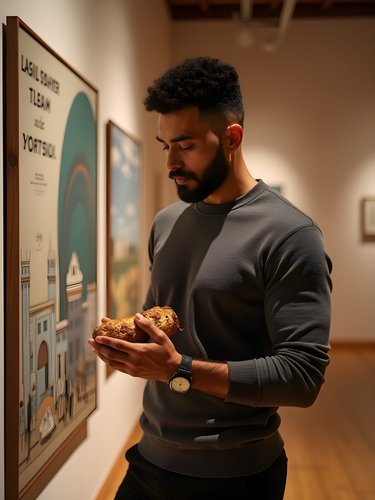
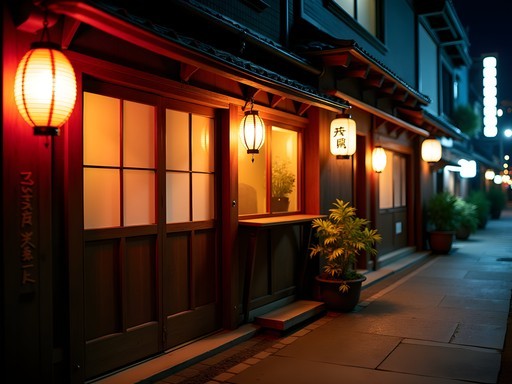






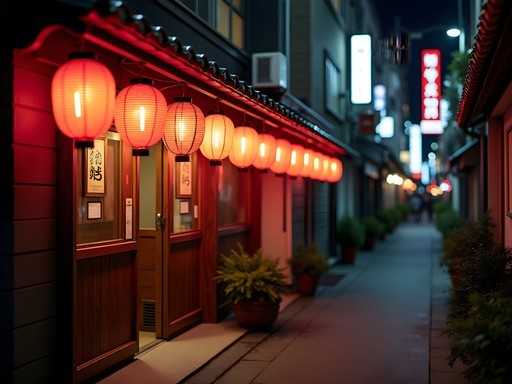

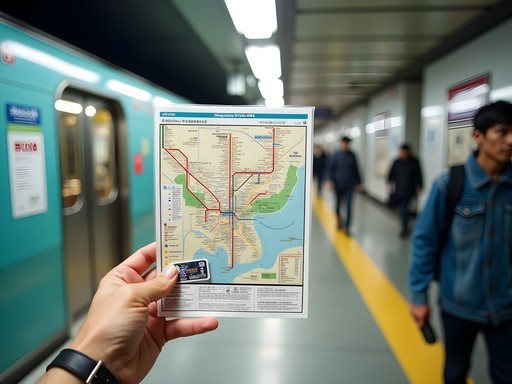
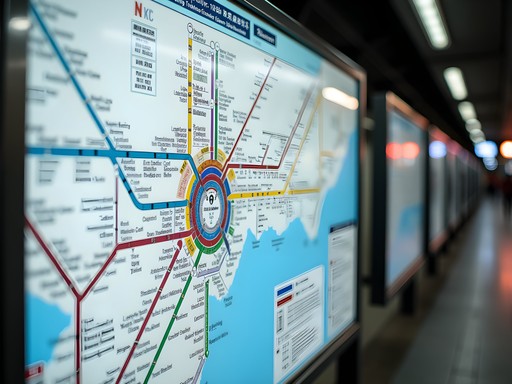
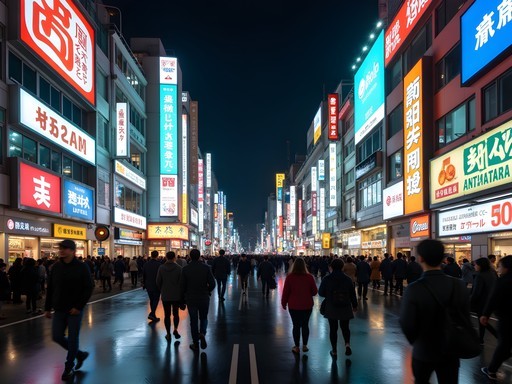
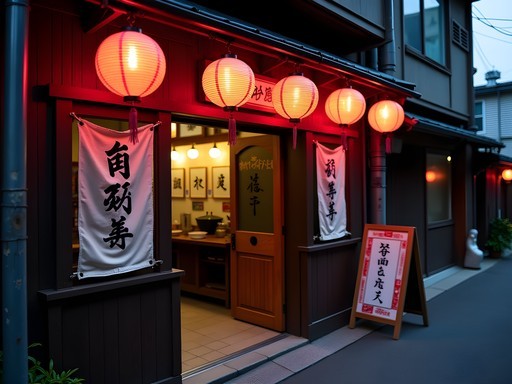


Comments
TokyoFan2000
Just got back from Tokyo and we tried that tiny izakaya in Golden Gai you recommended! The master barely spoke English but was so welcoming, and the chicken skewers were INCREDIBLE. We ended up drinking with some local salarymen who taught us a drinking game. Definitely the highlight of our trip! That sake recommendation was spot on too.
adventurebuddy
That sounds amazing! Was it hard to find? Golden Gai seems like a maze.
TokyoFan2000
It is a total maze! We just showed the photo from this blog to our taxi driver. Look for the red lantern and tiny wooden door. Worth getting lost for though!
SakeLover42
Those yakitori pics have me drooling! 🤤 Bookmarked for my trip next month!
Taylor Moreau
Excellent guide, Timothy. Having visited Tokyo quarterly for business over the past decade, I've developed quite an affinity for izakayas. I'd add that Kichijoji, just west of central Tokyo, has some exceptional establishments tucked away near Inokashira Park. The standing-only tachinomiya spots you mentioned are indeed perfect for solo travelers - I particularly recommend 'Sankyu' near Shinbashi Station where the chef-owner remembers returning customers even years apart. One tip for business travelers: izakayas are excellent venues for informal meetings with Japanese colleagues, often more productive than formal restaurants.
adventurebuddy
Kichijoji sounds amazing! Adding it to my list. Is it easy to get there from central Tokyo?
Taylor Moreau
Very straightforward - just take the JR Chuo Line from Shinjuku (about 15 minutes). Well worth the short trip.
adventurebuddy
This is exactly what I need! Going to Tokyo in January and izakayas are at the top of my list. How do you handle the language barrier when ordering? Any phrases I should learn?
Taylor Moreau
From my experience, learning 'sumimasen' (excuse me), 'onegaishimasu' (please), and 'oishii' (delicious) goes a long way. Many places in Tokyo have picture menus or plastic food displays you can point to. I always keep a translation app handy - Google Translate works offline if you download Japanese beforehand.
adventurebuddy
Thanks for the tips! Will definitely practice those phrases. Do you think it's better to try the touristy izakayas first or just dive into the local spots?
Taylor Moreau
I'd recommend starting with places in Shinjuku's Memory Lane (Omoide Yokocho) - they're accustomed to foreigners but still authentic. After you've got a feel for the etiquette, then explore the hidden gems Timothy mentions in Ebisu and Koenji.
citymaster
Thanks for sharing! Saved this for my trip next spring.
summerdiver
Pro tip for izakaya first-timers: don't order everything at once like at Western restaurants. Order 2-3 dishes, enjoy them, then order more. Makes for a better experience and the food comes out fresher!
Sarah Powell
Timothy, your section on navigating Tokyo's izakaya districts is particularly valuable. I've found that many travelers limit themselves to the Shinjuku and Shibuya areas, missing out on the exceptional establishments in places like Kagurazaka and Kichijoji. During my research for my upcoming book on Asian food cultures, I've been tracking the evolution of izakayas from traditional drinking establishments to the culinary powerhouses many have become. I'd recommend visitors use Tokyo Food Guide alongside your recommendations for a comprehensive experience. One question: did you notice any significant differences in izakaya culture between Tokyo and other Japanese cities?
Timothy Jenkins
Great question, Sarah! Absolutely - Osaka's izakayas tend to be more boisterous and value-focused (fitting the city's personality), while Kyoto's often emphasize refinement and traditional techniques. Tokyo's scene is more diverse, reflecting its metropolitan nature. Kagurazaka is definitely a hidden gem - glad you mentioned it!
springadventurer
OMG this post brought back ALL the memories!!! I spent two weeks in Tokyo last year and became OBSESSED with izakayas! That feeling when you slide open the door and everyone shouts 'IRASSHAIMASE!' gives me chills every time! The best one we found was this tiny place in Koenji where the chef grilled everything right in front of us. The chicken hearts were LIFE-CHANGING (never thought I'd say that!). Timothy, I'm definitely hitting up your recommendations in the Ebisu area next time! Anyone tried the standing sake bars? Those are next on my list!
winterbackpacker
Heading to Tokyo next month for the first time. Are there any izakayas you'd recommend for someone who doesn't speak Japanese at all? Kinda nervous about the language barrier...
citymaster
Not the author but I was in the same boat last year! Try Gonpachi in Nishi-Azabu (the Kill Bill restaurant). Very foreigner-friendly and still a fun izakaya experience. Also, Google Translate's camera feature saved me so many times!
winterbackpacker
Thanks for the tip! Will definitely download Google Translate before going.
Dylan Turner
Excellent breakdown of Tokyo's izakaya scene, Timothy. I've found that the distinction between different types of izakayas (tachinomi vs. traditional seated) is often overlooked in Western guides. I particularly appreciate your section on etiquette - the oshibori ritual and seating customs are subtle but important aspects of the experience that can make or break how you're received. On my last visit, I had exceptional experiences at Sasagin in Yoyogi and Maru in Asakusa - both offering remarkable sake selections that would complement your list nicely.
summerdiver
Sasagin is amazing! Their seasonal fish dishes are incredible too.
Venture X
Premium card with 2X miles, $300 travel credit, Priority Pass